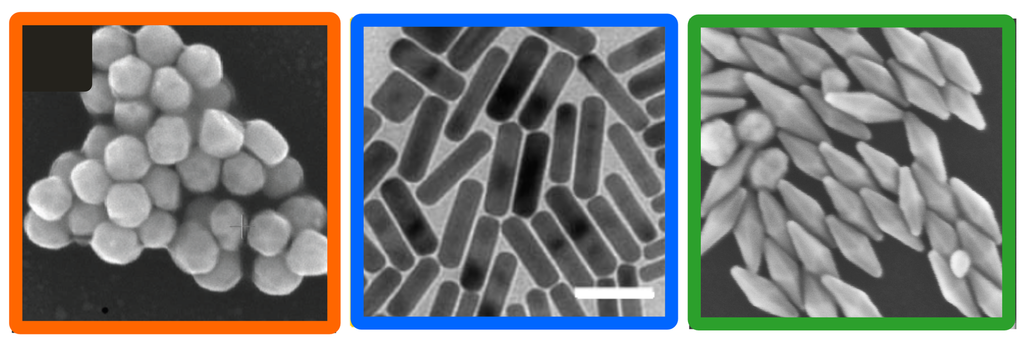Research highlight
Putting the spotlight on biomolecules
Photonics is mostly known for its potential in telecommunications. However, the field also offers a wealth of new opportunities for other domains. For example, in the interdepartmental research group Molecular biosensing, physicist Peter Zijlstra develops nanophotonic and plasmonic approaches for single-molecule detection.
‘My research focuses on biosensors that can measure small changes in molecular concentrations of specific biomolecules,’ associate professor Peter Zijlstra says. Biosensors as such are not new: you can buy them off-the-shelf at any drugstore, just think of pregnancy tests or rapid covid tests. ‘These sensors measure the so-called ensemble averages: they are able to determine if a sample contains e.g., covid-specific proteins or not,’ Zijlstra explains. ‘But at the moment, only glucose sensors additionally give information about variations in the concentration of the molecules over time.’
Enhancing signals
The main problem is that most of the biomolecules of interest are at least a million times less concentrated than glucose. Zijlstra summarizes the technological challenge at hand: ‘We need to measure very small quantities of molecules in low concentrations, which emit very weak electrical, optical or chemical signals. That is where plasmonics come in. By letting the molecules bind to a plasmonic structure, it is possible to enhance the signals so much that even single molecules become detectable. Plasmons arise when incident light causes the free electrons in the metal particle to oscillate. These oscillations generate high electric fields. Since the intensity of the signal scales with the electric field squared, with plasmonics we can achieve what I like to call nanofocusing of light. Quite literally putting a spot on the molecule the metal particle is bound to.’ Since the detection of the signal is through optics only, the technology can easily be integrated into different types of small devices.
What’s more, by using plasmonics, the researchers are not only able to better focus the light, but also to enhance the signal emitted by a fluorescently labelled biomolecule itself. ‘Here it becomes somewhat technical’, Zijlstra apologizes, ‘but we enhance both the excitation and the emission of the fluorescent label by dipole-dipole coupling, where the strength of the coupling determines the detected intensity. This particularly has applications in biophysical studies of single molecules, rather than biosensing per se.’
“It would be great if my work on miniaturizing plasmonic sensing within EHCI would turn out to be instrumental for the biosensing work within ICMS.”
Peter Zijlstra | Full Professor

Groundbreaking combinations
Application wise, a major advance of using plasmonics is that it seamlessly fits into the currently available toolbox of biophysicists. ‘Most of the current detection mechanisms are based on fluorescence techniques. Our technology boosts the fluorescence, significantly improving the signal-to-noise ratio.’ That is also what Zijlstra identifies as his first priority: ‘I would like to develop a platform that enables biophysicists to study single molecules in more detail, without having to change their setups.’
To achieve this, multiple challenges have to be overcome, requiring groundbreaking combinations of different fields of expertise, the physicist explains. ‘All of the currently available photonic and plasmonic based techniques require large instrumentation for the signal generation and detection. We want to miniaturize and integrate those aspects, perhaps even on a single chip. On these chips, we need to collect and detect every single photon with excellent signal to noise ratios. That requires a rather unique combination of expertise, that to our good fortune is bundled in the Eindhoven Hendrik Casimir Institute. My group for example closely collaborates with the group of Photonics and Semiconductor Nanophysics and the Photonic Integration group.’
Sensor scope
A second challenge is to broaden the scope of the sensors. ‘At the moment, we can only measure the binding and unbinding of the molecules to our plasmonic particles, where the binding kinetics are a measure for the type of molecule. Currently we can distinguish two different types of molecules using the binding kinetics, but we cannot pinpoint in what respect the family members differ from each other. In the future, we would like to combine our method with for example Raman spectroscopy, circular dichroism, or infrared spectroscopy to identify differences in folding or vibrational energy levels. These properties provide information on the chemical structure of the detected molecule as well, which may enable us to study how these biomolecules respond to medicines.’

Multiple projects
At the moment, Zijlstra is working on multiple large scale projects studying all developments mentioned above. With his ERC Consolidator Grant, he develops technology to study the folding of proteins. In the Innovative Training Network CONSENSE, he is developing a new sensor technology for continuous monitoring of disease status and treatment efficacy. The Innovative Training Network SUPERCOL is focused on super-resolution microscopy and characterization of the photonic and plasmonic structures. And in a recently awarded NWO OTP project WaterMonitor, Zijlstra will use the technology for the continuous monitoring of micropollutants in water.
On top of that, Zijlstra recently reported on yet another research angle. ‘Plasmonic sensing has one major disadvantage: when you focus all of the incident light onto a small area, you inevitably heat up the particle, leading to a change in the binding/unbinding dynamics. In our recent paper in Small, we turned this around and demonstrated that you can use the kinetics of this binding process to gain information about the nanoscale temperature at the surface of a single plasmonic particle.’
Besides being connected to the EHCI, Zijlstra is also affiliated to the Institute for Complex Molecular Systems, of which he is a core member. ‘In the ICMS, we have ample experience in developing sensors for proteins. It would be great if my work on miniaturizing plasmonic sensing within EHCI would turn out to be instrumental for the biosensing work within ICMS.’
Putting the spotlight on biomolecules
Spectral sensing catches the eye
Paving the future with photonic membranes